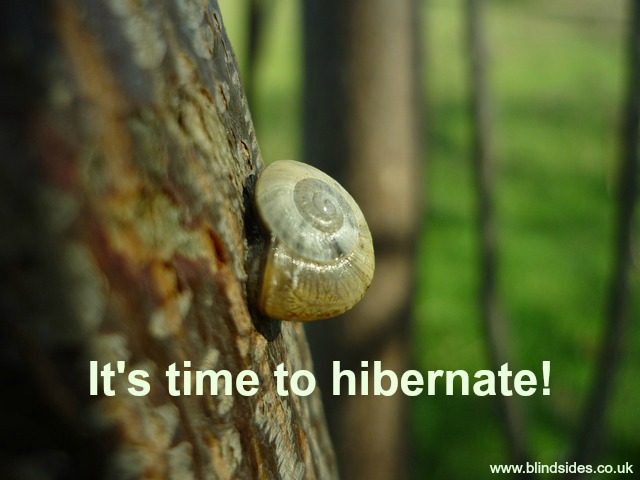It’s time to hibernate!
Thursday, January 14th, 2016

For the first time this winter, the temperature has dropped to zero and I for one am not cut out for these low temperatures. I’ve been thinking enviously about all the animals that hibernate. For most of us the closest we can get to hibernation is snuggling up at home in front of a roaring fire or with the central heating on full blast.
Interestingly though, there have been a few cases where the human body seems to have gone into some kind of hibernation. For example, a Swedish woman who crashed head first into a frozen stream while skiing and became trapped under the ice. When she was rescued 80 minutes later her heart and breathing had stopped and her body temperature was 13.7C. She appeared to have drowned but after 10 days in intensive care and careful warming she woke up and went on to recover almost fully. Somehow the cold had preserved her.
Most of the time, however, it is animals such as bears, squirrels and bats that hibernate and there are some facts about them which are just as fascinating as the story about the Swedish woman…
* Arctic ground squirrels normally maintain a body temperature similar to humans (37C). But during hibernation, they can survive a core temperature as low as –3C, carefully managing their super-cooled bodily fluids so that they won’t freeze solid.
* Some hibernating animals wake for short periods during hibernation to eat and relieve themselves. Others sleep through the entire winter.
* During hibernation, the heart rate for many animals slows to less than 10 beats per minute. Breathing also slows.
* A black bear can gain up to 30 pounds a week during its pre-hibernation eating binge.
* It’s not just for winter: In tropical Madagascar, the fat-tailed dwarf lemur crawls into tree-holes and shuts down for an average of seven months to deal with a dearth of food and water during the dry season.
* Even fish can hibernate. Notothenia coriiceps, informally known as Antarctic cod, cuts its metabolism by two-thirds and burrows under the seabed for days at a time during dark Antarctic winters.
* A pregnant American black bear can give birth without ever emerging from hibernation. She doesn’t even need rouse herself to care for her young, instead nursing her cubs for months by drawing on her reserves of stored fat.
* Although it’s unlikely that humans will start hibernating any time soon, research by Seth Donahue, a biomedical engineer at Colorado State University, could lead to new treatments for spinal fractures and osteoporosis.
